Key takeaways:
- Understanding your target audience is crucial for tailoring presentations and enhancing engagement.
- Building a strong personal brand through authenticity and storytelling connects deeply with the audience.
- Effective use of social media helps showcase events and foster genuine relationships with followers.
- Collecting testimonials and feedback after engagements can significantly improve promotional efforts and showcase impact.
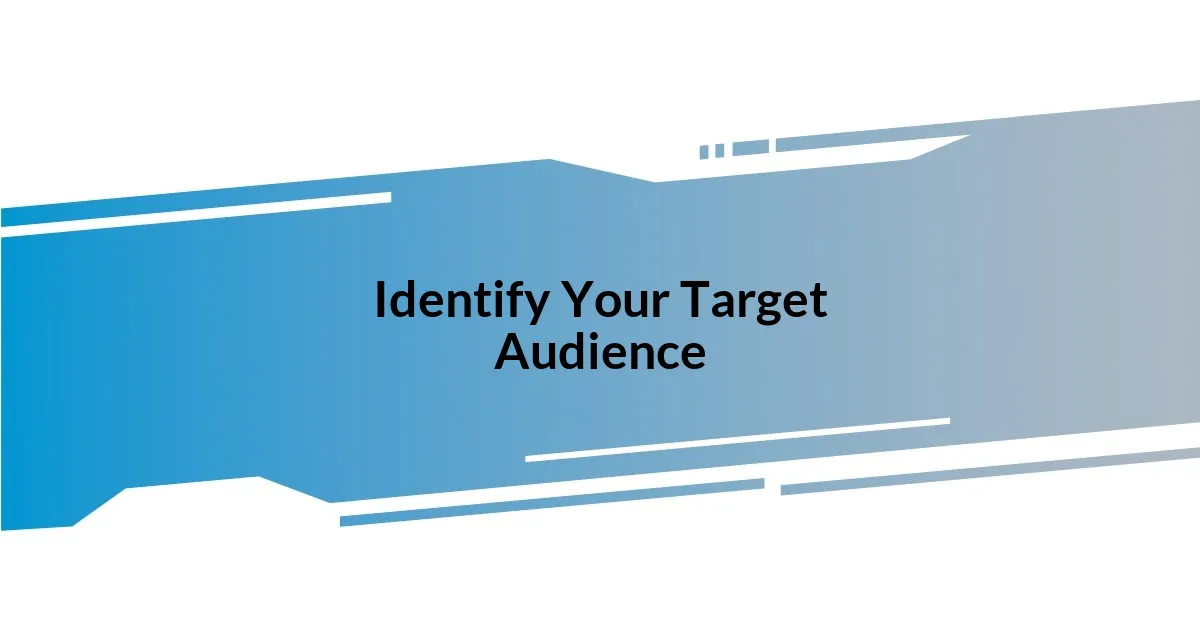
Identify Your Target Audience
Understanding your target audience is essential for any speaking engagement. I’ve found that diving deep into who will be in the audience can provide insights that shape my entire presentation. For instance, when I spoke at a local women’s business conference, researching the attendees’ backgrounds helped me tailor my message, making it resonate on a personal level.
Have you ever considered what your audience truly values? I remember a time when I spoke to a group of high school students about career choices. I quickly learned that addressing their immediate concerns—like college admissions and job opportunities—made all the difference in their engagement. Connecting with an audience means feeling their pulse, understanding their aspirations, and meeting them where they are.
Additionally, I often use social media polls and feedback from previous events to refine my understanding of the audience’s interests. This iterative process allows me to pivot and adapt my content, ensuring that what I present is not only relevant but also impactful. Engaging with your audience before the event can also foster a deeper connection, transforming a simple talk into a meaningful dialogue.
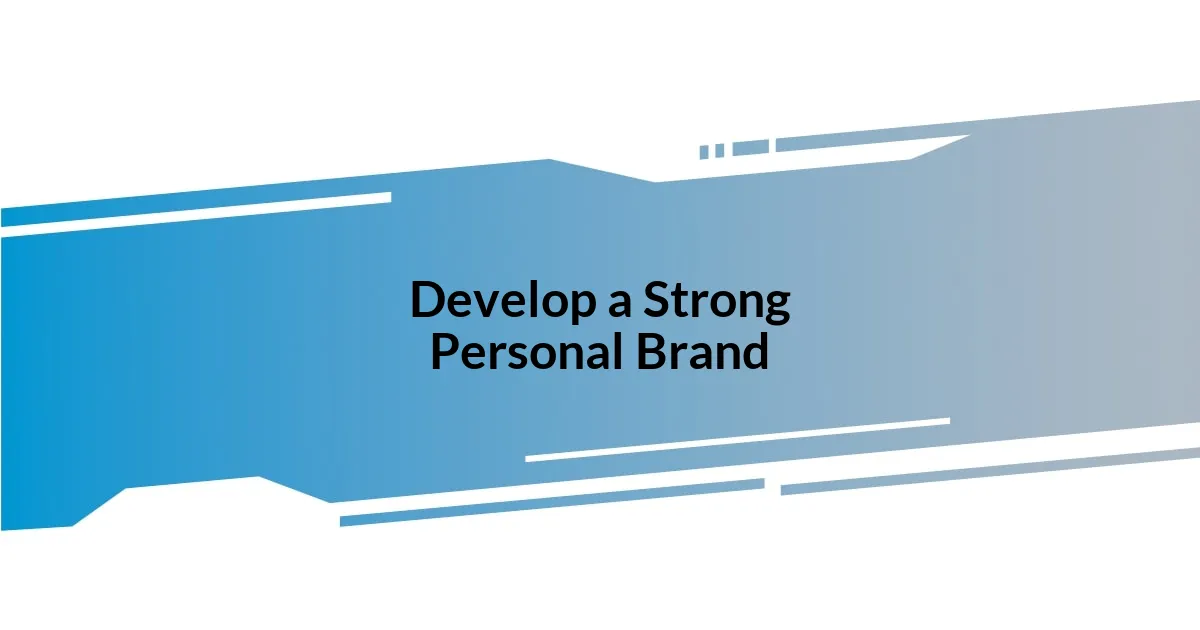
Develop a Strong Personal Brand
Building a strong personal brand is about authenticity and making a genuine connection with your audience. I realized early on that sharing my story—not just my credentials—sets the foundation for my brand. For example, when I started speaking about mental health, I drew from my own experiences, discussing the challenges I faced and the lessons I learned. This not only humanized me but also made my message resonate with many who were on similar journeys.
When cultivating your personal brand, consider these key elements:
- Clarity of Purpose: Clearly define what you stand for and what you want to achieve with your messages.
- Visual Identity: Develop a cohesive visual style in your presentations and online presence, from color schemes to logos.
- Consistent Messaging: Ensure your content across different platforms communicates the same core values and ideas.
- Engagement Strategy: Actively engage with your audience, responding to their comments and showing appreciation for their support.
- Authenticity: Stay true to your values and voice; people are drawn to genuineness.
Each of these ingredients has allowed me to carve out a space in the speaking landscape where my voice is recognized and valued, leading to more opportunities for impactful engagements.
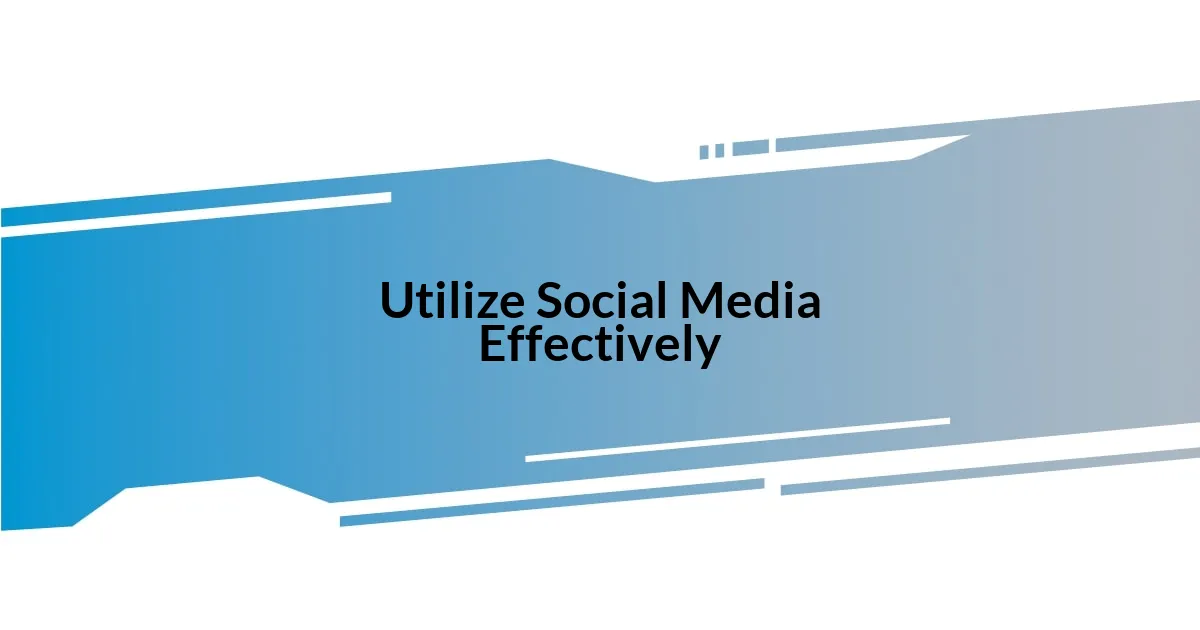
Utilize Social Media Effectively
Social media is a dynamic tool that can significantly amplify my speaking engagements. I’ve found that platforms like Instagram and LinkedIn have been particularly effective for showcasing not only my upcoming gigs but also snippets of past presentations. I remember one instance when I shared a brief video clip of an enthusiastic audience responding to my talk. Within hours, I received messages from followers who were inspired to invite me to speak at their events, proving that visual storytelling can create powerful connections.
Engaging with my audience on social media goes beyond just promoting events; it’s about nurturing relationships. I often host live Q&A sessions where attendees can ask questions related to my speaking topics. During one of these sessions, a follower opened up about their struggles with public speaking, which led to a heartfelt discussion. This not only solidified their interest in my next talk but also allowed me to tailor my message to address common fears and challenges — transforming followers into engaged part of my community.
To maximize impact, I utilize different social media platforms strategically, understanding their unique audiences. For example, I focus on sharing professional insights on LinkedIn, while my Instagram space is filled with behind-the-scenes moments and personal reflections. This tailored approach ensures I’m speaking the language of each platform, connecting with followers where they feel most comfortable.
| Platform | Engagement Strategy |
|---|---|
| Visual storytelling, personal moments, and behind-the-scenes content. | |
| Professional insights, industry-related articles, and thought leadership posts. |
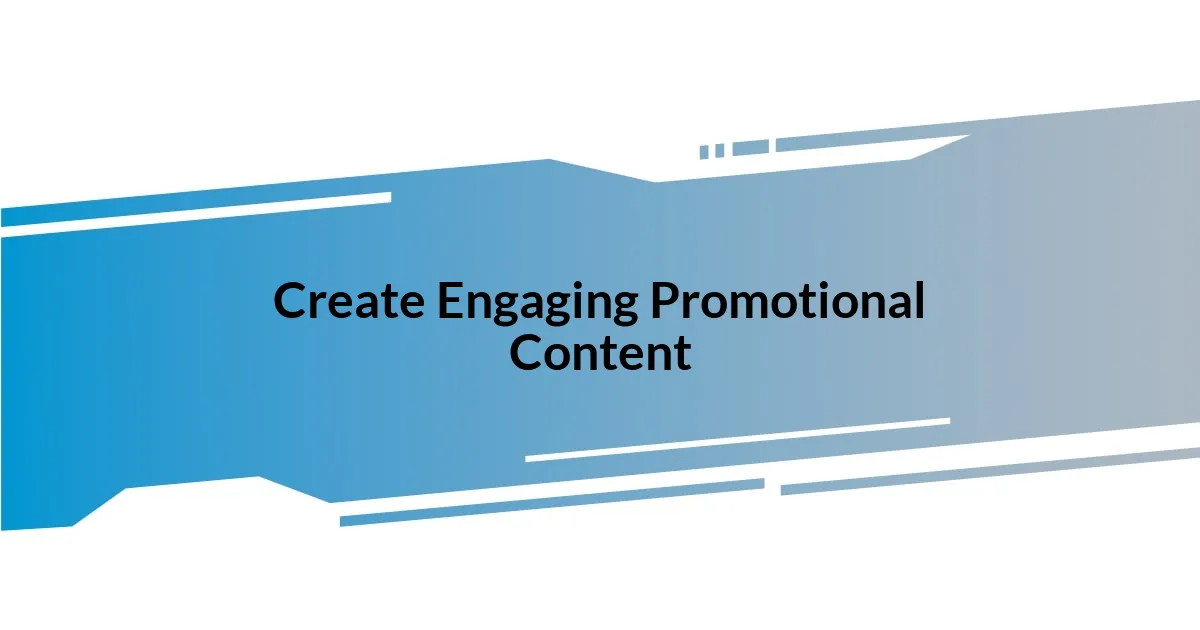
Create Engaging Promotional Content
Creating engaging promotional content is crucial for captivating my audience. I remember designing a flyer for one of my speaking engagements that included a heartfelt quote from a past attendees. This simple touch sparked curiosity and drew people in. Honestly, it felt incredible to realize that just a few words could resonate so deeply with potential attendees, inviting them to learn more about my message.
Another tactic I’ve found effective is using storytelling in my promotional materials. For example, I once shared a blog post detailing my journey into public speaking after overcoming my own fears. This vulnerability not only connected me with my audience but also encouraged them to join me, feeling they were on this journey together. Have you ever thought about how sharing your personal challenges can enhance your promotional efforts? It’s about making that genuine connection where people feel seen and understood.
Visuals also play a significant role in engaging content. I’ve experimented with various formats, from vibrant infographics to impactful video teasers. Recently, I created a montage of highlights from previous talks, set to uplifting music. The response was amazing—people not only shared it but also expressed excitement about the upcoming event. It’s a reminder that sometimes, connecting through creativity can be more powerful than any written word.
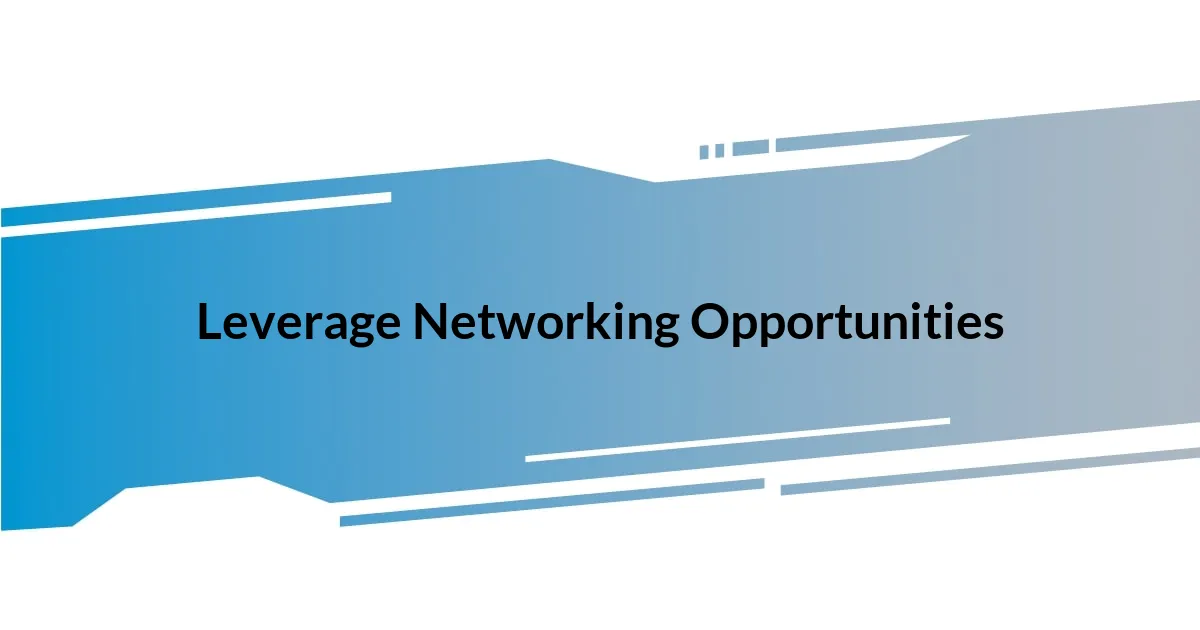
Leverage Networking Opportunities
Leverage Networking Opportunities
Attending events where I can meet fellow speakers and potential clients has transformed my approach to promoting my speaking gigs. Just last year, I participated in a local conference and struck up a conversation with an event planner during lunch. As we exchanged stories, I discovered that she was looking for speakers for her upcoming series, and that connection led to me being invited to present! Isn’t it amazing how a casual chat can open doors you never expected?
I have found that following up after networking events is essential. A few days after meeting someone, I send a personal message reflecting on our conversation, often mentioning something specific they shared. I remember one time I wrote to a marketer I met, referencing a unique campaign she described. That small detail sparked an ongoing dialogue, and eventually, she invited me to collaborate on a project involving a workshop. So, how do you keep those connections alive after the initial meeting?
Utilizing the power of online networks has also been a game-changer for me. I routinely engage with industry-related groups on platforms like LinkedIn, contributing to discussions and sharing insights. One memorable instance was when I posted a thought-provoking article about the art of storytelling in presentations. The comments flooded in, creating a rich conversation. Before I knew it, I had several invitations for virtual speaking engagements from individuals who appreciated my perspective. Connecting through shared interests truly strengthens the network we build.
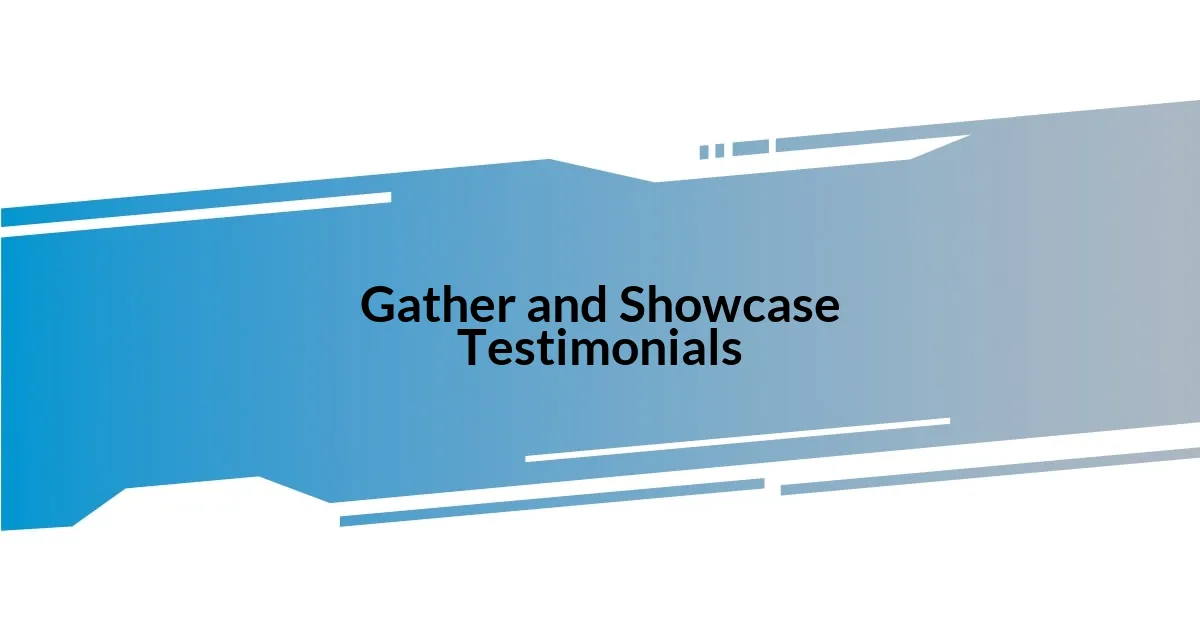
Gather and Showcase Testimonials
Gathering and showcasing testimonials has been a game-changer for me. After each speaking engagement, I make it a point to ask attendees for their feedback. One time, a participant shared how my session inspired her to pursue a project she’d shelved for years. That glowing testimonial not only filled my heart but became a centerpiece in my promotional materials, showcasing the real impact of my work.
Displaying these testimonials in a visually appealing way adds to their effectiveness. I often create a dynamic graphic featuring a powerful quote alongside the attendee’s name and photo. It feels like I’m sharing a piece of my audience’s journey, amplifying their voices as much as my own. Honestly, who wouldn’t be drawn to an event promising such meaningful transformations?
Furthermore, I love the idea of integrating video testimonials. Hearing someone’s passion and excitement directly can be far more compelling than just reading text. Recently, I captured a few attendees sharing their thoughts right after one of my talks. Their enthusiasm was contagious! It serves as a powerful reminder that authentic experiences resonate deeply with potential attendees—don’t you think people connect with real emotions over polished ads any day?
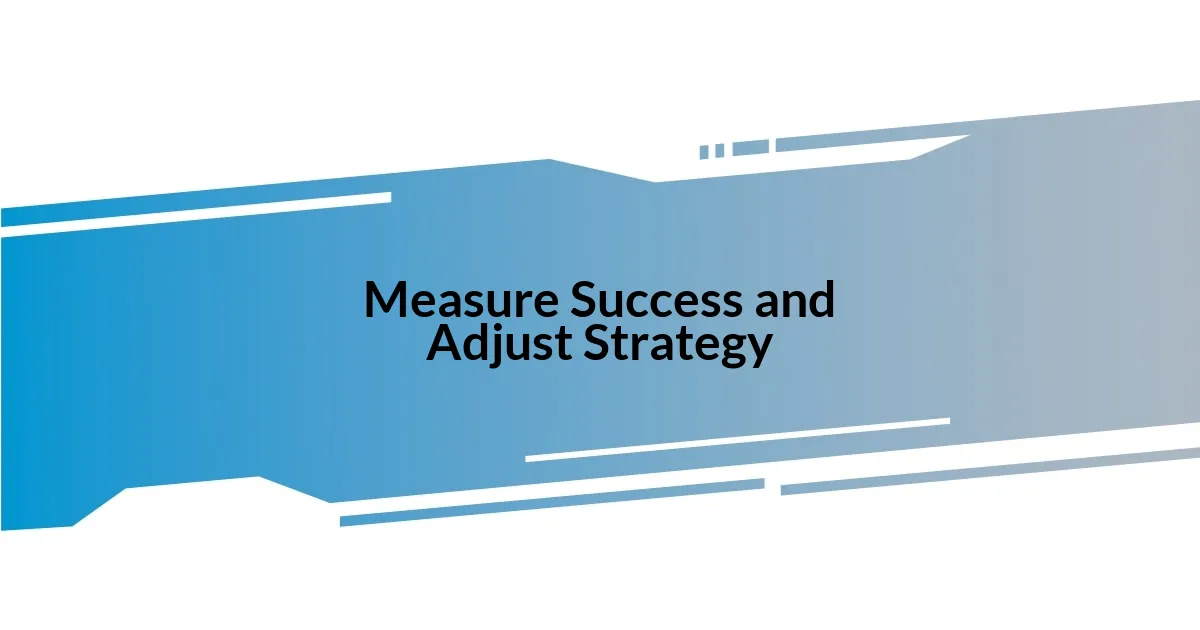
Measure Success and Adjust Strategy
To measure success effectively, I always revisit the feedback I receive after each event. One time, I received constructive criticism about pacing in my presentation, which initially felt disheartening. However, I realized that addressing this input meant I could become a more engaging speaker, ultimately enhancing future performances. Reflecting on feedback allows me to pinpoint areas for growth and celebrate the wins that boost my confidence.
Tracking metrics such as audience engagement and social media interactions is also vital for my strategy. After a series of talks, I noticed a spike in online followers that coincided with a particular topic I discussed. This insight made me rethink my content selection. Why not dive deeper into themes that genuinely resonate with my audience? Adjusting my approach based on measurable outcomes has led to a more tailored and impactful messaging strategy that I feel proud of.
Sometimes, I also analyze my booking rates in response to my promotional efforts. After a campaign where I offered free workshops in exchange for testimonials, I saw a significant increase in invitations for paid gigs. This experiment not only expanded my reach but also reinforced the value of providing upfront value. Isn’t it fascinating how taking a calculated risk can pave the way for new opportunities?